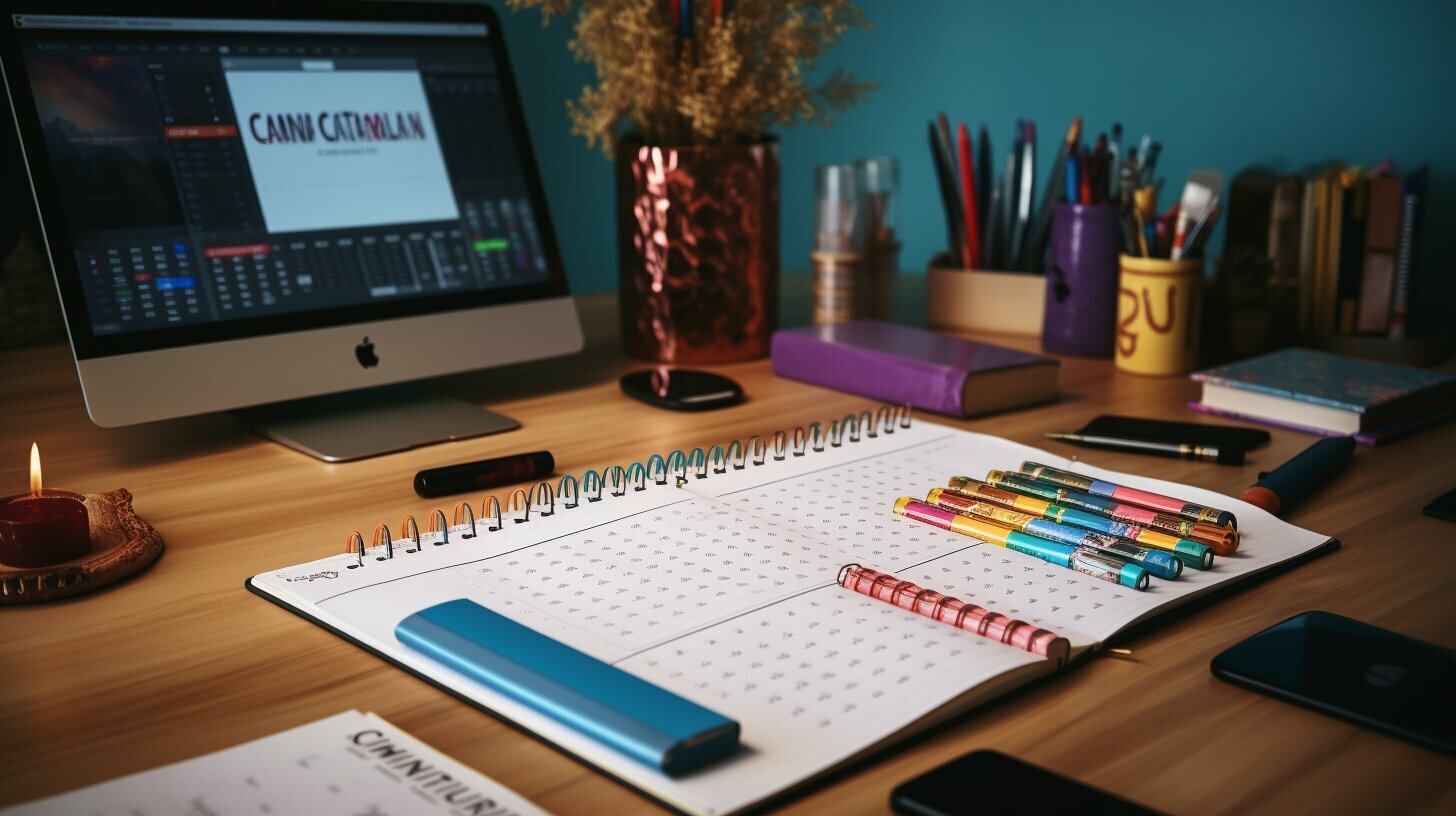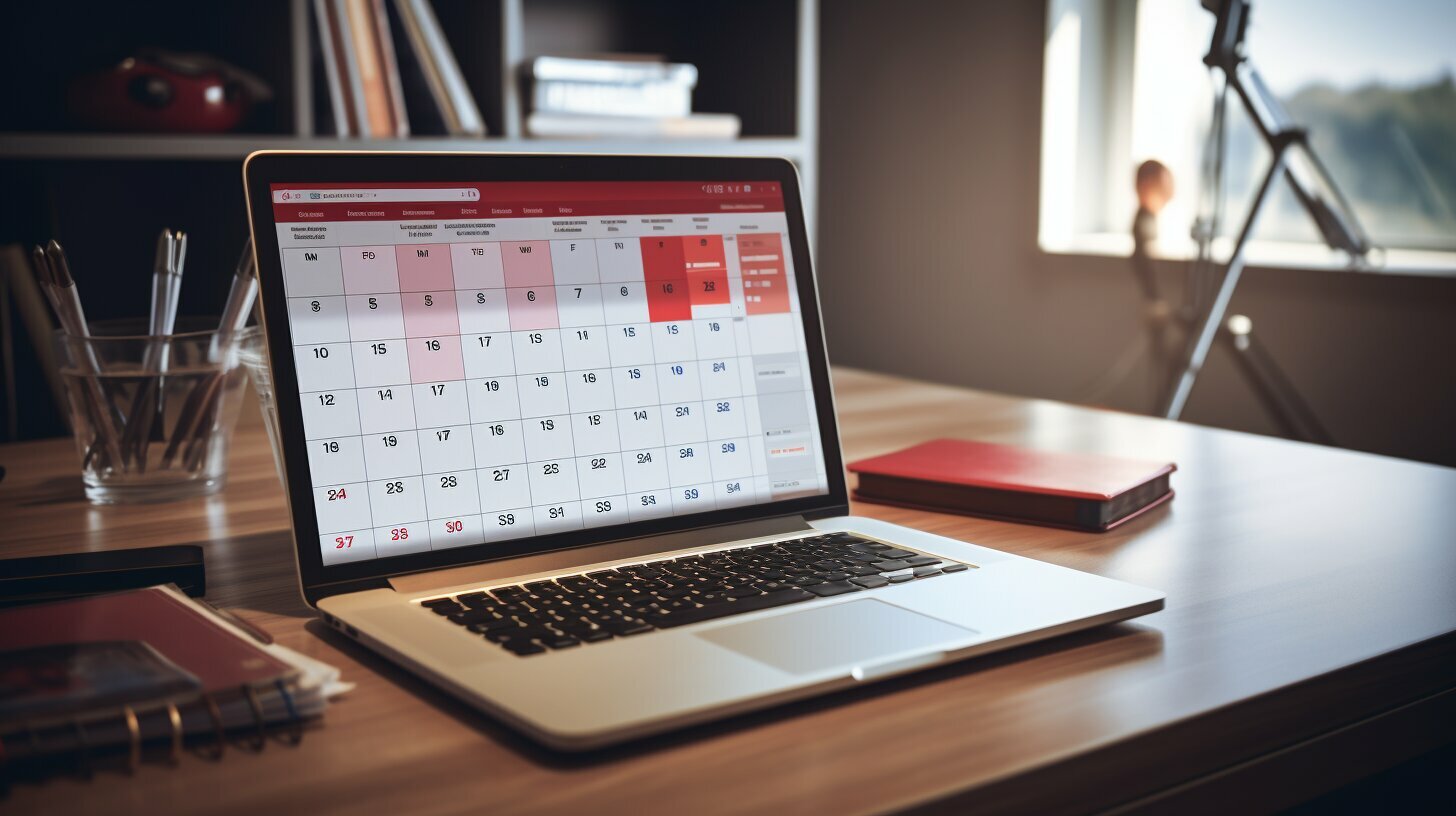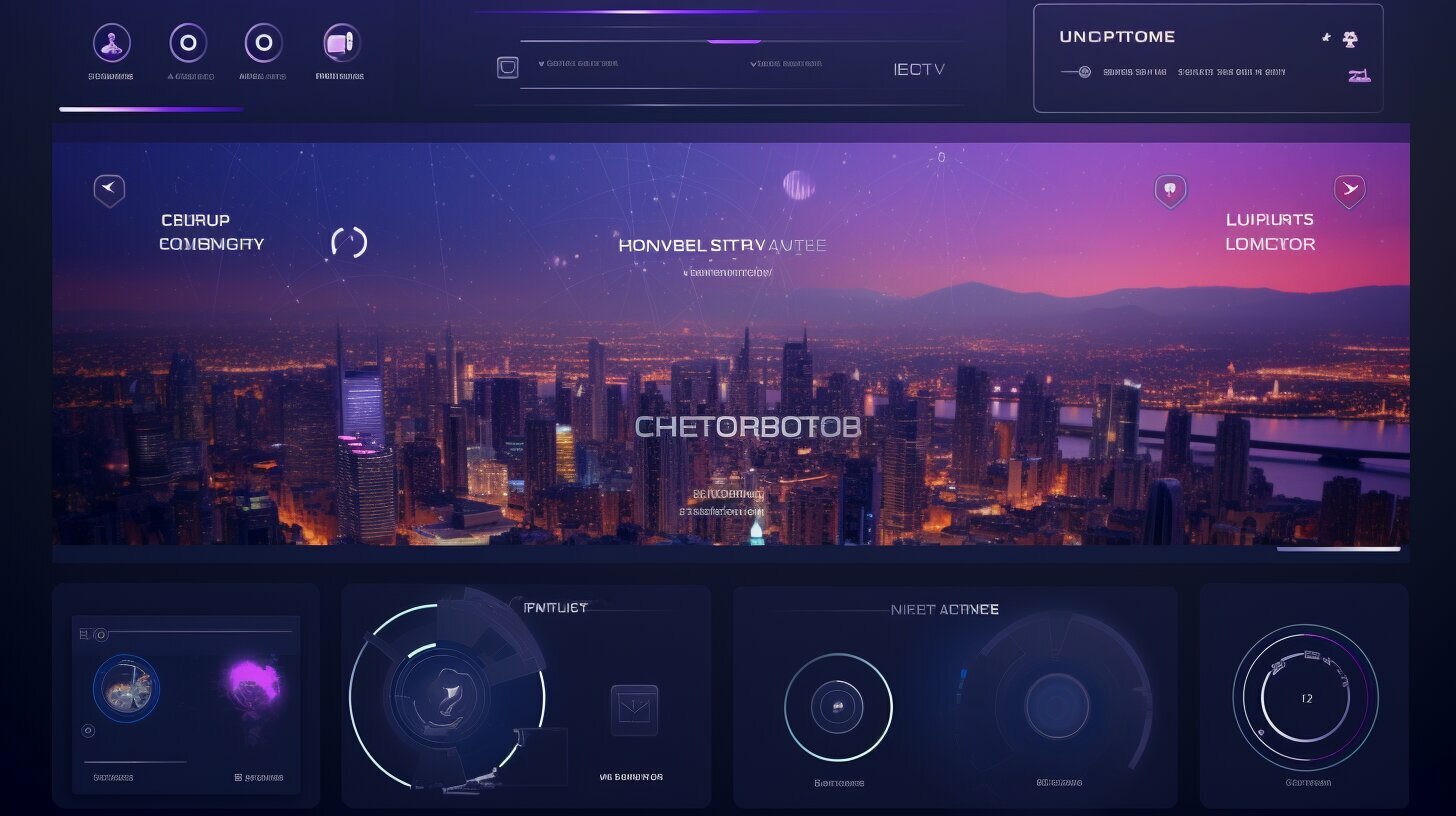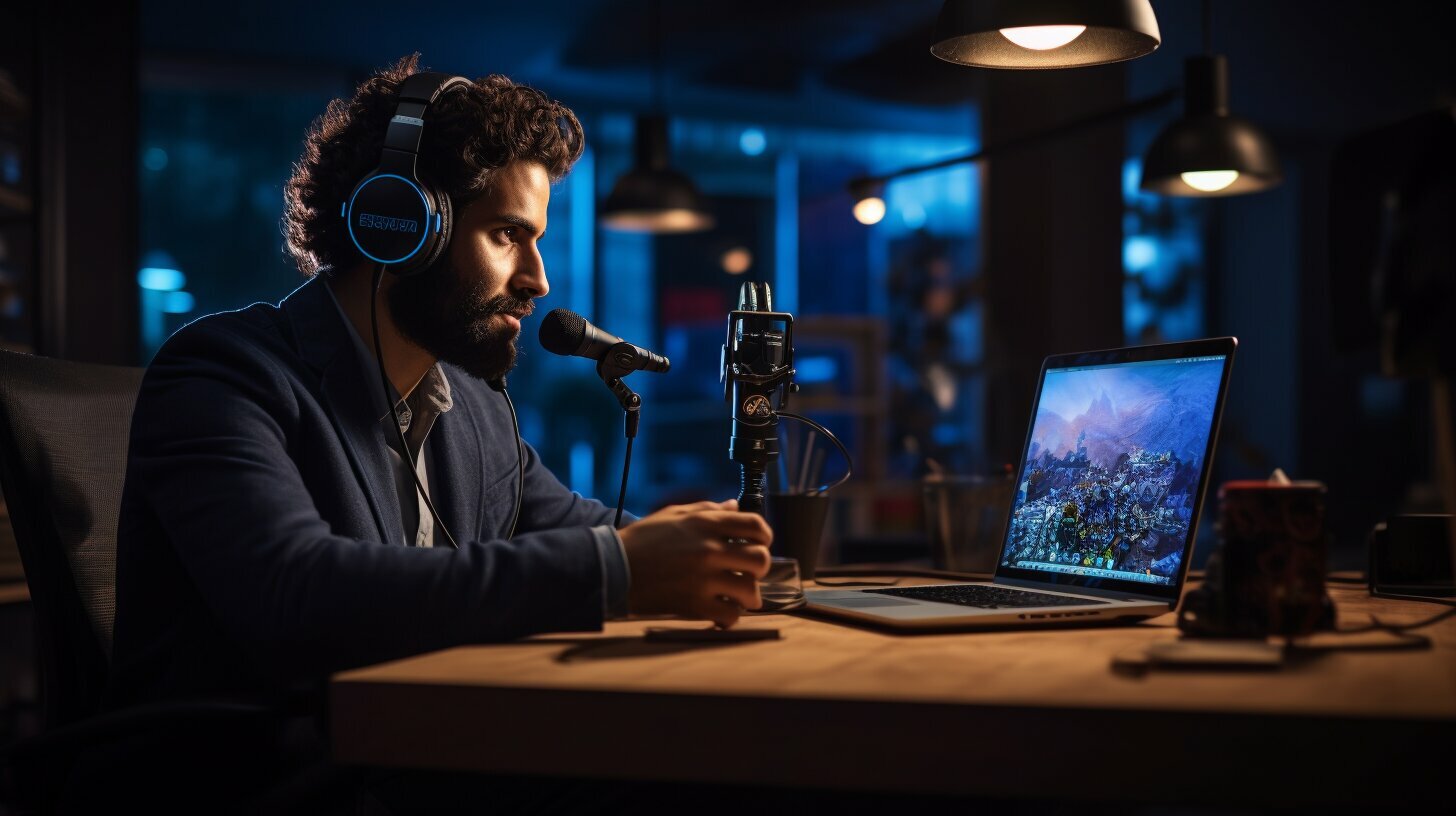Designing an effective newsletter layout is crucial in the digital age, as it provides a direct line of communication to your audience’s inbox. Unlike social media, email newsletters offer a unique opportunity to engage your readers on a personal level and strengthen your brand. To make the most of this powerful marketing tool, it’s important to create a layout that not only captures attention but also delivers your message clearly and effectively.
Key Takeaways:
- Start with a clear hierarchy and concise, scannable content
- Use a consistent layout with cohesive colors and typography
- Optimize for mobile devices with responsive designs
- Incorporate relevant, impactful images to enhance visual appeal
- Include clear call-to-actions to prompt desired actions
Understanding the Basics of Newsletter Layout Design
When it comes to designing an effective newsletter layout, understanding the basics is essential for creating a visually appealing and user-friendly experience. By following best practices and employing effective email newsletter layout techniques, you can enhance engagement and ensure your message resonates with your audience.
Organizing Content
One of the key aspects of newsletter layout design is organizing your content in a clear and logical manner. Use headings and subheadings to break up the text and help readers quickly identify the main points. Utilize bullet points and numbered lists to make information more scannable and digestible.
| Best Practices for Organizing Content |
|---|
| Use headings and subheadings |
| Utilize bullet points and numbered lists |
Remember, your readers are likely to skim through the newsletter, so it’s essential to make it easy for them to find the information they need.
Hierarchy and Navigation
Establishing hierarchy is crucial to guide readers’ attention and help them navigate through your newsletter smoothly. Place the most important information at the top and use visual cues such as bold fonts, larger headings, and contrasting colors to highlight key elements.
| Effective Email Newsletter Layout Techniques |
|---|
| Establish hierarchy with visual cues |
| Use contrasting colors and bold fonts |
A well-structured layout with a clear hierarchy not only enhances readability but also improves the overall user experience.
Scannability and Readability
When designing a newsletter layout, keep in mind that many readers tend to scan rather than read every word. Make your content scannable by using short paragraphs, subheadings, and bullet points. Use a legible font size and maintain proper spacing to enhance readability.
| Newsletter Design Best Practices |
|---|
| Use short paragraphs and subheadings |
| Maintain proper spacing and legible font size |
By optimizing your newsletter layout for scannability and readability, you ensure that your audience can easily consume your content and grasp the main points of your message.
Remember, the key to designing an effective newsletter layout lies in understanding the basics and implementing best practices. By organizing your content, establishing hierarchy, and prioritizing scannability and readability, you can create a visually appealing and user-friendly newsletter that resonates with your audience.
Establishing Consistency in Colors and Typography
Consistency in colors and typography plays a vital role in capturing attention and conveying a professional image in your newsletter layout. When designing an attention-grabbing newsletter, it’s essential to create a cohesive visual experience that aligns with your brand identity.
Start by selecting a color scheme that reflects your brand’s personality and resonates with your target audience. Choose a primary color and a complementary palette to create visual harmony throughout your newsletter. Consistency in colors not only adds aesthetic appeal but also helps readers associate specific colors with your brand, enhancing brand recognition and building trust.
| Color | Hex Code |
|---|---|
| Primary Color | #007bff |
| Secondary Color | #28a745 |
| Accent Color | #dc3545 |
In addition to colors, typography plays a crucial role in creating a professional and visually appealing newsletter layout. Choose fonts that are clear, legible, and accessible on different devices and screen sizes. Maintain consistency by using the same font family throughout your newsletter, with variations in font weight and size to create hierarchy and visual interest.
“Typography is the voice of your content.”
Font Recommendations:
- Heading: Helvetica Neue (Bold, 24px)
- Subheading: Open Sans (Semi-Bold, 18px)
- Body Text: Roboto (Regular, 14px)
By establishing consistency in colors and typography, you can create a visually appealing and attention-grabbing newsletter layout that not only engages readers but also strengthens your brand’s identity. Remember to test and optimize your layout over time, monitor analytics, and gather feedback from your readers to continuously improve your newsletter’s effectiveness.
| Newsletter Design Tips: |
|---|
| Choose a color scheme that aligns with your brand. |
| Select fonts that are clear and legible across devices. |
| Use consistent typography throughout your newsletter. |
| Test and optimize your layout for improved engagement. |
Optimizing for Mobile Devices with Responsive Designs
With the majority of people accessing their emails on mobile devices, optimizing your newsletter layout for mobile is paramount for engaging your audience effectively. A responsive design ensures that your newsletter looks great and functions well across different screen sizes, providing a seamless user experience.
To optimize your newsletter layout for mobile, consider the following tips:
- Create a single-column layout: Mobile screens are narrower than desktop screens, so it’s important to design your newsletter to fit comfortably on a small screen. Utilizing a single-column layout ensures that your content is easy to read and navigate on mobile devices.
- Use large, legible fonts: Small text can be difficult to read on mobile screens. Choose fonts that are clear and legible, and make sure your font size is large enough to be easily read on a mobile device.
- Include a mobile-friendly navigation: A mobile-friendly navigation menu makes it easy for readers to access different sections of your newsletter on their mobile devices. Consider using a hamburger menu or a simple dropdown menu to ensure a smooth navigation experience.
In addition to these design tips, it’s important to test and optimize your newsletter layout for mobile devices. Send test versions of your newsletter to different mobile devices and email clients to ensure that it displays correctly and functions well on all platforms. Monitor analytics to track the performance of your mobile-optimized newsletters, and use the data to make informed decisions on future layout improvements.
| Benefits of Responsive Designs |
|---|
| 1. Improved user experience on mobile devices |
| 2. Higher engagement and click-through rates |
| 3. Increased brand credibility and professionalism |
| 4. Expanded reach to a wider mobile audience |
The Importance of Mobile Optimization
In a world where smartphones and tablets are ubiquitous, it’s crucial to prioritize mobile optimization in your newsletter layout design. By catering to the needs and preferences of mobile users, you can effectively engage your audience and drive desired actions.
So, next time you design a newsletter layout, keep in mind the importance of optimizing it for mobile devices. Implementing responsive designs and following mobile design best practices will ensure that your newsletter shines on every screen.
Enhancing Visual Appeal with Impactful Images
Including visually appealing and relevant images can significantly enhance the overall visual appeal of your newsletter layout. Images have the power to capture attention, convey emotions, and amplify your message. When choosing images for your newsletter, keep in mind the purpose and audience of your content. Select images that align with your brand identity and evoke the desired response from your readers.
One way to incorporate impactful images is by using them as headers or section dividers. These images can help break up the text and add visual interest to your layout. Consider using images that relate to the content of each section, helping to create a cohesive and engaging experience for your readers. Additionally, choose high-quality images that are clear and crisp, as blurry or pixelated images can detract from the overall professionalism of your newsletter.
Another technique is to use images to tell a story. Use a sequence of images to build anticipation and guide readers through your content. This can be particularly effective for showcasing new products, sharing behind-the-scenes glimpses, or highlighting success stories. By strategically using images to tell a story, you can create a dynamic and engaging newsletter that keeps readers hooked.
| Benefits of Using Impactful Images: |
|---|
| 1. Capture attention |
| 2. Convey emotions |
| 3. Amplify your message |
| 4. Break up text |
| 5. Add visual interest |
| 6. Create a cohesive experience |
| 7. Build anticipation |
| 8. Tell a story |
Incorporating Clear Call-to-Actions
Clear call-to-actions are key to driving engagement and achieving the goals of your newsletter. Whether your aim is to increase website traffic, promote a new product, or encourage sign-ups for an event, strategically placed and well-designed call-to-actions can make all the difference.
When incorporating call-to-actions in your newsletter layout, it’s important to keep them concise and visually appealing. Use contrasting colors to make them stand out and consider using buttons or hyperlinked text to make them clickable. Keep in mind that the placement of your call-to-actions is equally crucial. Position them strategically throughout your newsletter, ensuring they are easily noticeable and accessible to your readers.
Another effective strategy is to create a sense of urgency or exclusivity in your call-to-actions. Use action-oriented language and time-limited offers to entice your readers to take immediate action. Additionally, consider personalizing your call-to-actions based on your audience’s preferences or past interactions with your brand.
Finally, don’t forget to test and optimize your call-to-actions over time. Experiment with different wording, colors, and placement to see which ones generate the highest click-through rates. Monitor analytics to gain insights into your audience’s behavior and preferences, and don’t hesitate to seek feedback from your subscribers to further refine your call-to-actions and improve overall newsletter performance.
FAQ
Q: How important is designing an effective newsletter layout?
A: Designing an effective newsletter layout is crucial in the digital age as it provides a direct line of communication to your audience’s inbox.
Q: Where should I start when creating engaging newsletters?
A: Start with a clear hierarchy and concise, scannable content to ensure that your newsletters are engaging and easy to read.
Q: How can I ensure consistency in my newsletter layout?
A: Use cohesive colors and typography throughout your newsletters to create a consistent and visually appealing layout.
Q: What should I consider for mobile devices?
A: Optimize your newsletter layouts for mobile devices with responsive designs to ensure they look great on different screen sizes.
Q: How can I enhance the visual appeal of my newsletters?
A: Incorporate relevant and impactful images that support your content and capture readers’ attention.
Q: How important are call-to-actions in newsletter layouts?
A: Clear and compelling call-to-actions prompt readers to take desired actions and are a crucial element of effective newsletter layouts.







